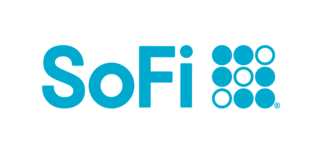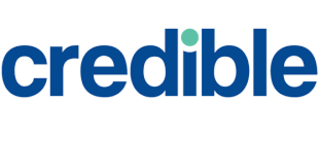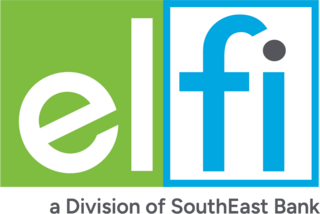As Student Loan 'On-Ramp' Ends, Missed Payments Will Once Again Hurt Your Credit

Protections aimed at helping federal student loan borrowers get back into the habit of making monthly payments end today.
The so-called “on-ramp” for returning to repayment blocked the worst consequences of missing student loan payments after monthly billing resumed last fall following a more than three-year pause during the pandemic. The on-ramp officially expires Monday, Sept. 30.
The end of the flexibilities comes even as borrowers' access to some repayment plans is limited. With multiple legal challenges taking aim at the White House's student debt relief efforts, the Biden administration has pulled down online applications to the new Saving on a Valuable Education (SAVE) repayment plan and has told loan servicers to pause processing any income-driven repayment applications, which often help borrowers lower their monthly bills.
As a result, some policy groups and consumer advocates had pushed the U.S. Department of Education to extend the protections offered under the on-ramp.
“Borrowers who cannot afford their payments … can’t currently get access to a more affordable payment,” says Abby Shafroth, who directs the Student Loan Borrower Assistance Project at the National Consumer Law Center. “There's also just a ton of confusion out there right now about what borrowers' options are.”
The center is one of the organizations that asked the department to extend the on-ramp until the legal challenges are resolved and loan servicers can catch up on processing applications for income-driven repayment plans. Without an extension, Shafroth says her group is concerned that many borrowers will miss payments in October and November — and face penalties they haven't dealt with in years.
At the same time, another borrower protection program is also ending soon — though it did get a slight extension. The Fresh Start program, which is an easier path to get out of default, now closes on Wednesday, Oct. 2. The Education Department announced Monday that it would extend the Fresh Start deadline by a couple days due to technical difficulties.
What happened during the on-ramp period?
Last fall, the student loan repayment system was turned back on for the first time since March 2020. Millions of borrowers had to readjust their spending after years without having to budget for student loan payments.
The on-ramp was intended to ease that transition, helping vulnerable borrowers who may not have been able to suddenly afford a monthly payment avoid serious ramifications. While interest has accrued, the government hasn't reported any missed student loan payments to credit bureaus, which meant they haven't affected people's credit scores. Missed payments also weren't counted for delinquency or default.
Between the pandemic payment pause and the on-ramp period, borrowers have been granted leniency against the worst consequences of missing student debt payments for more than four-and-a-half years.
Beginning next week, though, if you miss payments, your credit score could take a hit. And if your loans eventually fall into default, which happens after nine months of missed payments, the government can begin to garnish your wages and pull payments from tax refunds or Social Security checks.
These on-ramp policies have likely shielded millions of borrowers. Within a few months of payments resuming in 2023, nearly 30% of borrowers had fallen behind on their bills, according to a July report from the Government Accountability Office. About 6 million borrowers were at least 90 days delinquent.
Could the on-ramp protections be extended?
The National Consumer Law Center, along with 12 other consumer-focused groups, was the first to send a letter raising concerns about the end of the on ramp. Others have since followed.
Last week, the left-leaning Center for American Progress told the Education Department that borrowers needed more time without the harsh consequences. There are a few reasons why, the letter said, including the complexities of the student loan repayment system and ongoing issues with student loan servicers, but the main one was that the repayment plan the Biden administration intended to help lower-income borrowers is on hold.
“This on-ramp was essential but is now insufficient in light of ongoing legal challenges to the Saving on a Valuable Education (SAVE) plan,” the letter said.
The Department of Education has not publicly commented on the calls to extend the on ramp period. It did not return Money's request for comment.
While it remains a possibility that the on-ramp could be extended at the 11th hour, it’s not something borrowers should hold out for, Shafroth says.
What can borrowers do to prepare for the end of the on-ramp and Fresh Start program?
To prepare for the end of the on-ramp, borrowers should start by confirming that they know what type of repayment plan they’re in, how much their next payment is and when it will come due. In the next few days, log into your account with your loan servicer to find these details. (You can find who your servicer is by logging in on the Federal Student Aid website.)
If you can’t afford your next payment, you'll want to see whether there’s a more affordable option for you. Often, that will be an income-driven repayment plan, which ties your monthly bill to how much you earn.
Even though the Education Department has paused processing of income-driven repayment (IDR) applications, you can still sign up to eventually be enrolled via a PDF application you can download and then send to your servicer, though the SAVE lawsuit could change which plans are ultimately available.
If you’re uncertain about what repayment plan is best for you, there's an option on the application to request the plan with the smallest payment, Shafroth says. (The government has an overview of all the plans, and you can learn more about options for lowering your payment with income-driven plans in the National Consumer Law Center’s toolkit.)
“Don't let uncertainty about which is the absolute best plan be a barrier to enrolling,” Shafroth says. “You can just put the burden on the department and say, ‘Put me in the plan with the lowest monthly payment.’”
Once you send in an application for an income-driven plan, there will be a delay given the pause on processing and backlog in applications. In the meantime, the department has said you should be put into a ‘processing forbearance’ for up to 60 days. That means interest will still accrue, but you otherwise won’t be penalized for missing payments.
The key word here is "should," Shafroth says. To ensure it actually happens, she recommends calling or messaging your loan servicer after you submit your IDR application. State the date you applied for an income-driven plan, and then request the processing forbearance.
If you don’t have time to do all this in the coming days, then you can also call your servicer, tell them you can’t afford your payment and ask for a deferment or forbearance. But note that interest will still accrue in deferments and forbearances, and unlike with income-driven repayment plans, you’re not making progress toward any possible future student loan forgiveness. You should think of them as a failsafe to avoid missing payments while you figure out a more long-term plan.
Finally, for borrowers whose loans are in default, there are just a few more days to take advantage of the Fresh Start program. Instead of going through the more complicated and often lengthy process of getting out of default, this process can take less than 10 minutes, according to the Education Department. You have to make one phone call or go online to myeddebt.ed.gov and request your loans be removed from default.
Like borrowers missing payments, borrowers with loans in default have been shielded from the worst of it for the past four-plus years. But starting next month, the government is going to start resume collection activities on those loans again.
More from Money:
Student Loan Forgiveness Is Blocked Again: 5 Key Updates Amid the Legal Chaos
Student Loan Borrowers to Get Relief Checks After $120 Million Navient Settlement
These Are the Best Colleges in America







